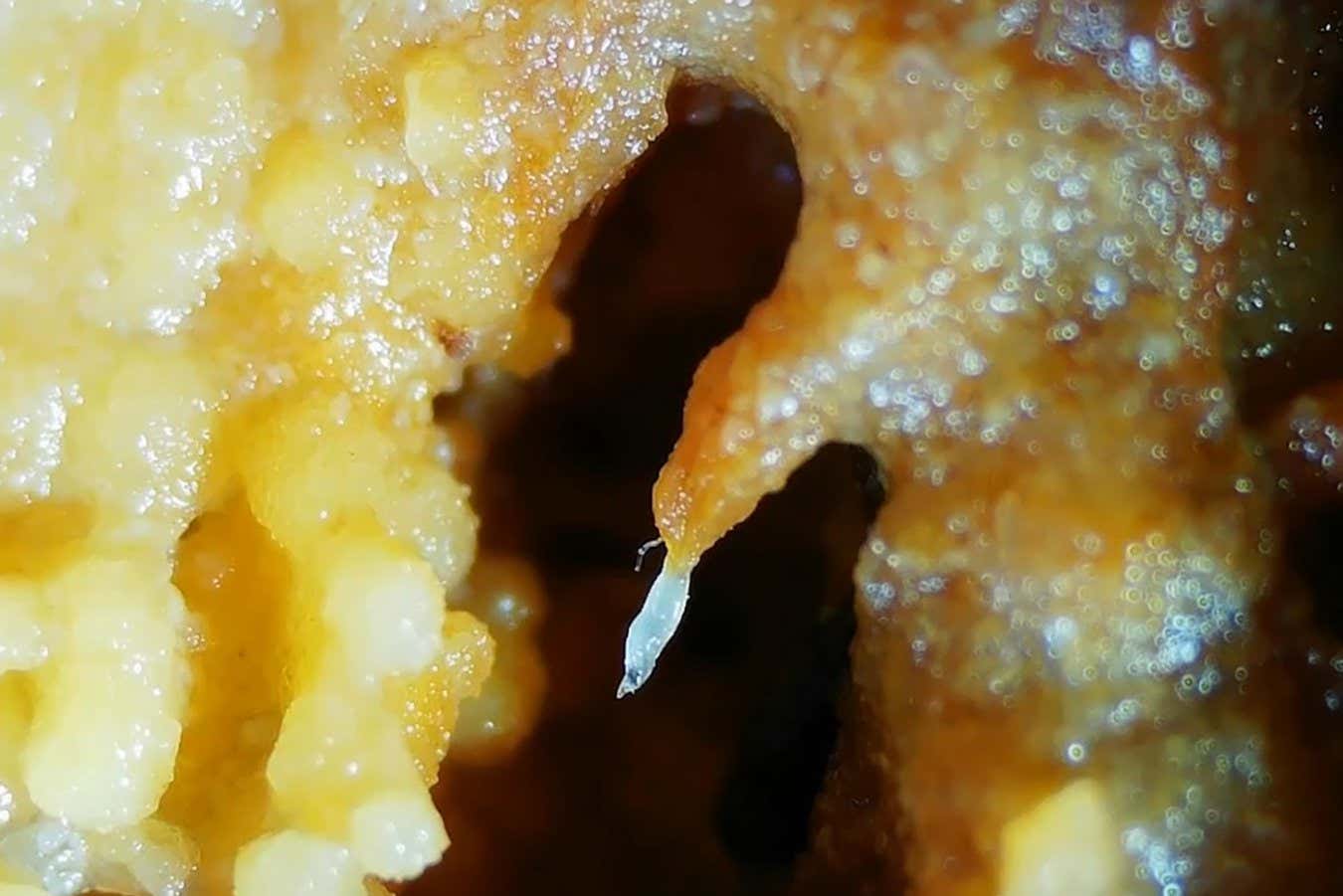Life
Thousands of tiny nematode worms can join up to form tentacle-like towers that can straddle large gaps or hitch rides on larger animals
What do you do when food is running low and you are a tiny, millimetre-long worm? The answer, it turns out, is join up with thousands of your fellows to make a tentacle-like superorganism that can bridge gaps to nearby objects or grab hold of larger animals to carry you further afield.
Biologists studying nematode worms in labs have long known that they occasionally form “towers”, but these haven’t been studied in detail, says Serena Ding at the Max Planck Institute of Animal Behavior in Germany. So, she and her colleagues have done just that.
The team found that worms such as the widely studied Caenorhabditis elegans are most likely to form towers when there are large numbers of them, a shortage of food and some kind of structure for them to congregate on – in these experiments, a toothbrush bristle.
The worms did sometimes form towers in the absence of any physical support, but these structures were no higher than 5 millimetres and lasted for just a minute. With a bristle as a foundation, the towers reached 11 mm high and lasted up to half a day.
In other kinds of nematodes, there are reports of towers up to 50 mm high. “They can grow super big,” says Ding.
While the base of a tower is stationary, the other end can extend beyond the support structure and move around like a tentacle. For instance, a tower can extend out to a nearby surface and form a bridge, allowing worms to move across gaps far wider than any individual worm could manage.

A “tower” of nematode worms growing on a rotting apple
Perez et al. Current Biology (2025)
The towers also grab hold of objects that touch them, such as the legs of fruit flies, resulting in part or all of each tower being picked up. In this way, the worms might get a free ride to other places.
It is known that individual nematode worms hitch rides on insects, but it hadn’t been shown that entire towers can do it. “That’s the presumed function that we could confirm,” says Ding.
With the help of digital microscopes, the team also recorded towers on rotting apples in an orchard near the institute– the first time the behaviour has been observed in the wild.
Worm towers are always formed by a single species even when many different species are present, the team found, and they can consist of worms at any active stage of their life cycle. Previously it was thought towers were made only by “dauer” worms – a tough larval stage that forms when conditions are stressful.
There are some similar superorganisms. For instance, slime moulds are amoeba-like single-celled organisms that can come together to form larger bodies that move around in search of food.
Topics:





















